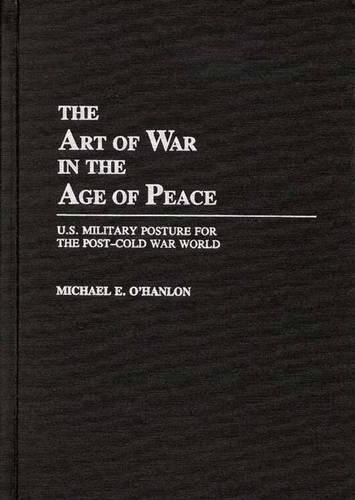
The Art of War in the Age of Peace: U.S. Military Posture for the Post-Cold War World
(Hardback)
Publishing Details
The Art of War in the Age of Peace: U.S. Military Posture for the Post-Cold War World
By (Author) Michael OHanlon
Bloomsbury Publishing PLC
Praeger Publishers Inc
24th August 1992
United States
Classifications
Tertiary Education
Non Fiction
International relations
355.02
Physical Properties
Hardback
176
Width 156mm, Height 235mm
510g
Description
This study begins with a set of strategic assumptions - most notably that the risks of US-Soviet war are and will remain extremely low and that the US military remains a stabilizing influence in many geographic theatres. O'Hanlon then shows that the United States' interests in the Third World, while nowhere truly vital, are sufficiently important to justify a measured degree of global military presence and engagement. Historical, political, and military analysis suggests that these interests can be protected efficiently and effectively with a US military reduced in size by roughly 40 to 50 percent in most types of major combat forces, and by 95 percent in nuclear forces. In the realm of conventional forces, these cuts would be about twice as deep as those planned by Secretary of Defense Richard Cheney; in the nuclear realm they would be much deeper than those approved by the Bush administration. By contrast, analysis suggests that US capabilities should be largely held constant - or in some cases even expanded - in logistics, intelligence and communications, R&D, and special forces. The resulting force posture would cost about US$200 billion in 1991 through the early years of the next century, and perhaps US$230 billion annually thereafter. O'Hanlon's is one of the first in-depth studies of how the US military might be reconfigured for the post-Cold War world. This study will prove useful for defence policy makers at the specialized levels and for students of the "guns vs. butter" policy issues and debates.
Reviews
A worthy essay on an important and current issue: what is to be the U.S. military force structure now that the Cold War is no more. . . A very useful work. Give it a high place on your reading list.-The Friday Review of Defense Literature
This book serves as a useful primer for those saddled with the daunting task of force planning in a rapidly changing world.-Armor
"This book serves as a useful primer for those saddled with the daunting task of force planning in a rapidly changing world."-Armor
"A worthy essay on an important and current issue: what is to be the U.S. military force structure now that the Cold War is no more. . . A very useful work. Give it a high place on your reading list."-The Friday Review of Defense Literature
Author Bio
MICHAEL E. O'HANLON is a Weapons and Arms Control Analyst with the National Security Division of the Congressional Budget Office in Washington, D.C. The book was written under the auspices of Princeton University, with financial support from the National Science Foundation. (The views expressed in the book are his own, of course, and in no way are associated with the Congressional Budget Office.)
